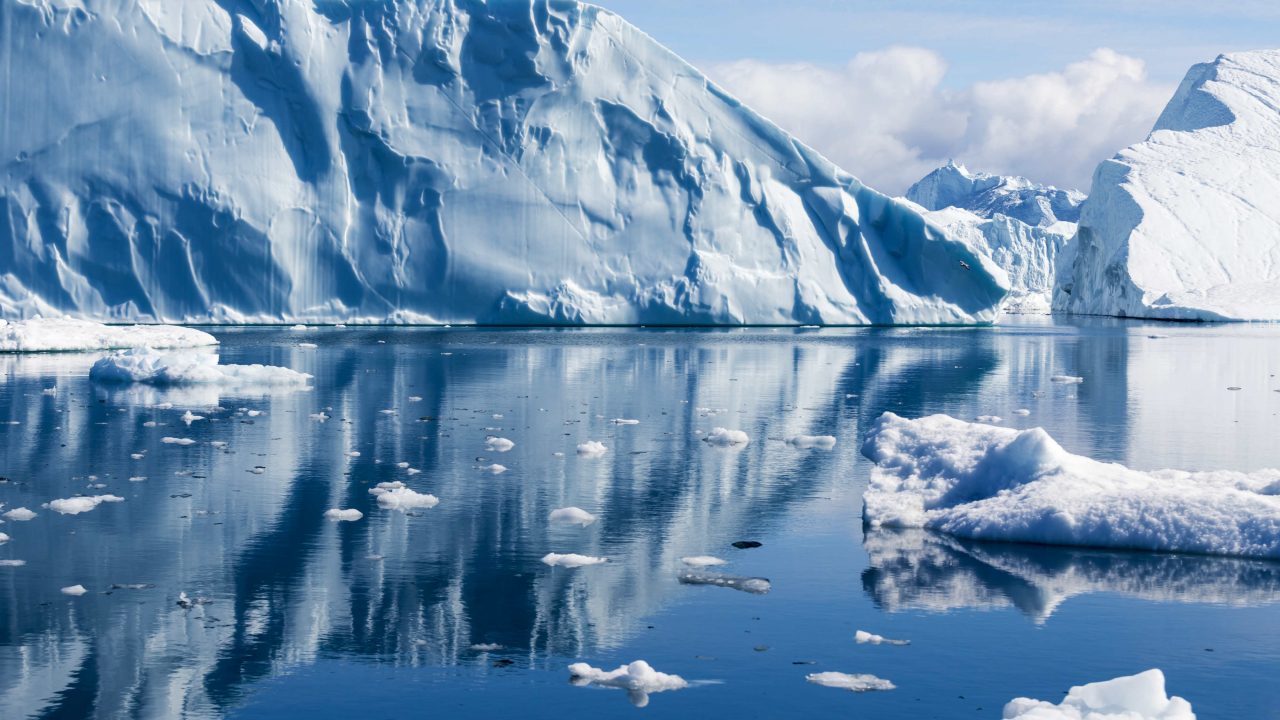
Integrated ecosystem assessment of East Greenland waters
Land: Norge, Island, Danmark, Grønland
År: 2023 – 2026
The Arctic region is characterized by several unique oceanographic conditions, and the waters off East Greenland provide a good example of this uniqueness. Along the east Greenland shelf, cold and low salinity arctic waters flow south, creating a layer insulating surface waters from warmer and nutrient-rich waters below. However, specific regions where this layer is absent or eroded by mixing (e.g. the shelf break waters) are more productive and support the majority of current commercial fisheries.
East Greenland, like many other Arctic regions, boasts an exceptionally low population density and minimal local human activity, creating a pristine environment. However, climate change is disrupting the oceanographic conditions in the region. The most significant change is the increased heat from the subpolar Atlantic now entering the area. Furthermore, the salinity is changing due to altered freshwater conditions from melting sea ice and glacial meltwater. Together, these changes are expected to impact stratification, circulation, and all aspects of the ecosystem. Therefore, monitoring, quantifying, and predicting these changes is crucial for managing regional activities.
An integrated ecosystem assessment (IEA) is a method to implement ecosystem-based management
(Levin et al 2009). This approach takes a holistic view of ecosystems, considering the entire ecosystem rather than focusing on specific elements such as the concentration of a compound or the biomass of a single species. As a result, the full suite of potential drivers and their cumulative impact can be assessed. An important factor is that humans are considered part of the ecosystem and its management. Society depends on marine ecosystems for a series of services (provisional, regulatory, cultural and supporting), and human activities influence the functioning of these services.
An IEA is in principle an iterative process cycling through five stages: i) Scoping; ii) Indicator development; iii) Risk Analysis; iv) Management Strategy evaluation; and v) Monitoring and evaluation. It consists of a combination of expert judgement and quantitative analysis. The net goal is a continually developing tool for sustained management of an ecosystem.
The overarching goal of this project is to initiate the process of developing and performing an integrated ecosystem assessment for East Greenland waters.
The project aims to not only benefit the specific region but also to establish an approach that can extend to neighbouring ecoregions, such as the central Nordics Seas, Icelandic waters, and the Central Arctic Ocean.
Particular focus is on the initial stages of Scoping, Indicator Development and Risk Analysis. With this, the project will bring together stakeholders to help identify:
i) concerns and the drivers of change in the region,
ii) knowledge gaps that require further research and
iii) discussions on what indicator measurements can be used tomanage ecosystem status.
Through this process, the project aims to develop a comprehensive understanding of the ecosystem and its management, laying the groundwork for effective, sustainable management practices in the region and beyond.
ICES publication: https://www.ices.dk/community/groups/Pages/WGIEAGS.aspx
HOVEDPARTNER
Grønlands Naturinstitut, Søren Post, sopo@natur.gl
ANDRE PARTNERE:
Greenland Climate Research Centre, Greenland, Mie Winding, Thomas Juul Pedersen, Caroline Bouchard
Technical University of Denmark, Denmark, Colin Stedmon, Jesper Boje, Marja Koski, Caroline V.B. Gjelstrup
University of Aarhus, Denmark, Eva Friis Møller, Anders Mosbech, Mikael Sejr
University of Akureyri, Iceland, Steingrimur Jónsson
Marine and Freshwater Research Institute, Iceland, Warsha Singh
Møreforsking, Norway, Margrete Emblemsvåg
UiT The Arctic University of Norway, Norway, Arve Lynghammar.
Støtte fra AG-Fisk:
DKK 1.013.407
